How to Find Competitor Backlinks for free (Real & Actionable Tips)
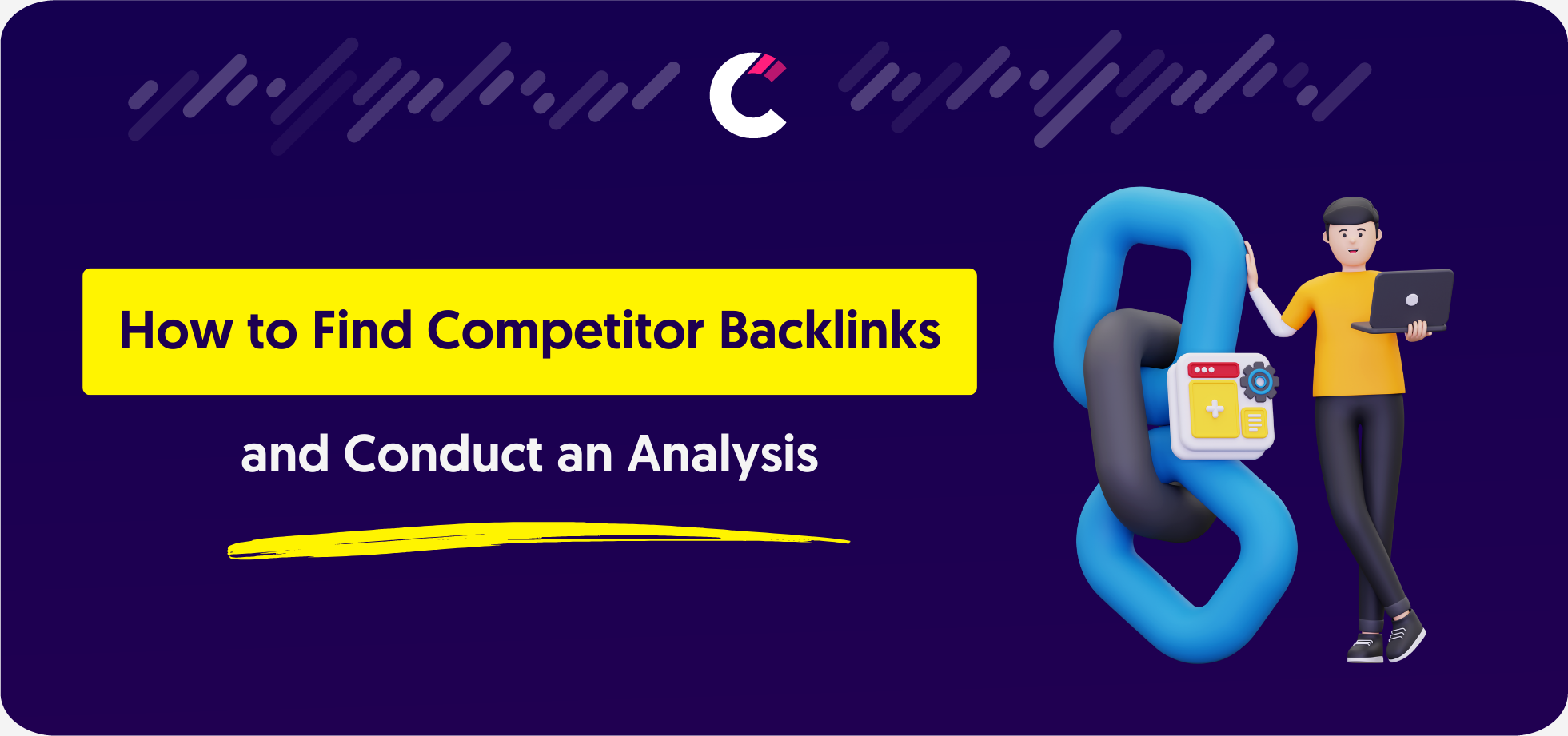
When I first started focusing working in SEO, I didn’t care that much about backlinks and i didn’t realize how much backlinks could make or break rankings.
But here’s the thing, every backlink your competitor has is an opportunity for you.
If your competitors have built links on high-authority sites, why can’t you? If they’ve gotten featured on industry blogs, why aren’t you there too?
Backlinks aren’t just links. They act as endorsements in the eyes of search engines, helping pages rank higher. The better the links, the better the rankings.
What are Competitor Backlinks?
Competitor backlinks are the inbound or external links pointing to your competitor’s website.
Search engines see backlinks as trust signals. The more quality links pointing to a site, the more credible and authoritative the website is.
But this isn’t just about counting backlinks. It’s about understanding where they come from and how you can replicate (or outperform) their strategy.
Analyzing competitor backlinks allows you to:
✔ Find websites that already link to similar content that you can reach out to for your own placement.
✔ Spot patterns in their backlink strategy. are they relying on guest posts, directories, or maybe even PR?
✔ Target high-authority sources that can boost your rankings faster.
The Importance of Finding Competitors’ Backlinks

I used to think SEO was all about publishing great content and waiting for rankings to improve. But then I was so wrong!
The websites outranking me weren’t just creating better content, they were getting better and more backlinks.
If your competitors are ranking higher, chances are their backlink strategy has something to do with it.
Analyzing where their backlinks come from allows you to:
✔ See what type of content attracts links in your niche.
✔ Find high-authority websites willing to link to competitors (which means they might link to you too).
✔ Understand how they’re building links and replicate what’s working.
If you’re serious about ranking higher, finding your competitors’ backlinks isn’t optional, it’s a must-do!
How to Find Competitors’ Backlinks

There’s no magic trick to finding competitor backlinks. It’s a process, and if you do it right, you’ll discover real opportunities to improve your rankings and outrank your competitors.
Here’s how to do it in a few steps:
Step 1: Identify Your Main Keywords
Before you can track backlinks, you need to know who your real competitors are.
Start by listing the main keywords in your niche. These are the terms your audience is searching for when looking for products, services, or information related to your industry.
For example, they could be things like “cars for sale” if you’re in the automotive industry
Not sure which keywords your competitors rank for? Use our Free Competitor Keyword Finder to get a clear view of the keywords that matter most.
Step 2: Identify Your Backlink Competitors
After you have gathered a good list of keywords, the next step is figuring out who’s dominating the search results.
Your backlink competitors aren’t always the same as your business competitors. They’re the websites that rank well for your target keywords and have strong backlink profiles. They’re mostly known are organic search competitors
You’ll typically find two types of backlink competitors:
Domain-Level Competitors
These are direct competitors that rank for lots of keywords and topics in your niche. Studying their backlinks helps you understand their overall SEO strategy and how they maintain authority.
Page-Level Competitors
Some sites might not compete with you in a domain level, but they still rank well for specific pages and keywords you’re targeting. Finding their backlinks gives you insights on how to rank higher for specific topics.
Next Step: Extract Their Backlinks
Once you’ve identified who’s ranking and why, the final step is simple, go find their backlinks!
You can analyze competitor backlinks at a page level or domain level, depending on your goals.
- Want to compete with a site ranking for multiple keywords? Study their domain-level backlinks.
- Targeting a specific keyword? Look at page-level backlinks to see what’s helping individual pages rank.
Now, let’s see how you can find your competitors backlinks with competitors.app
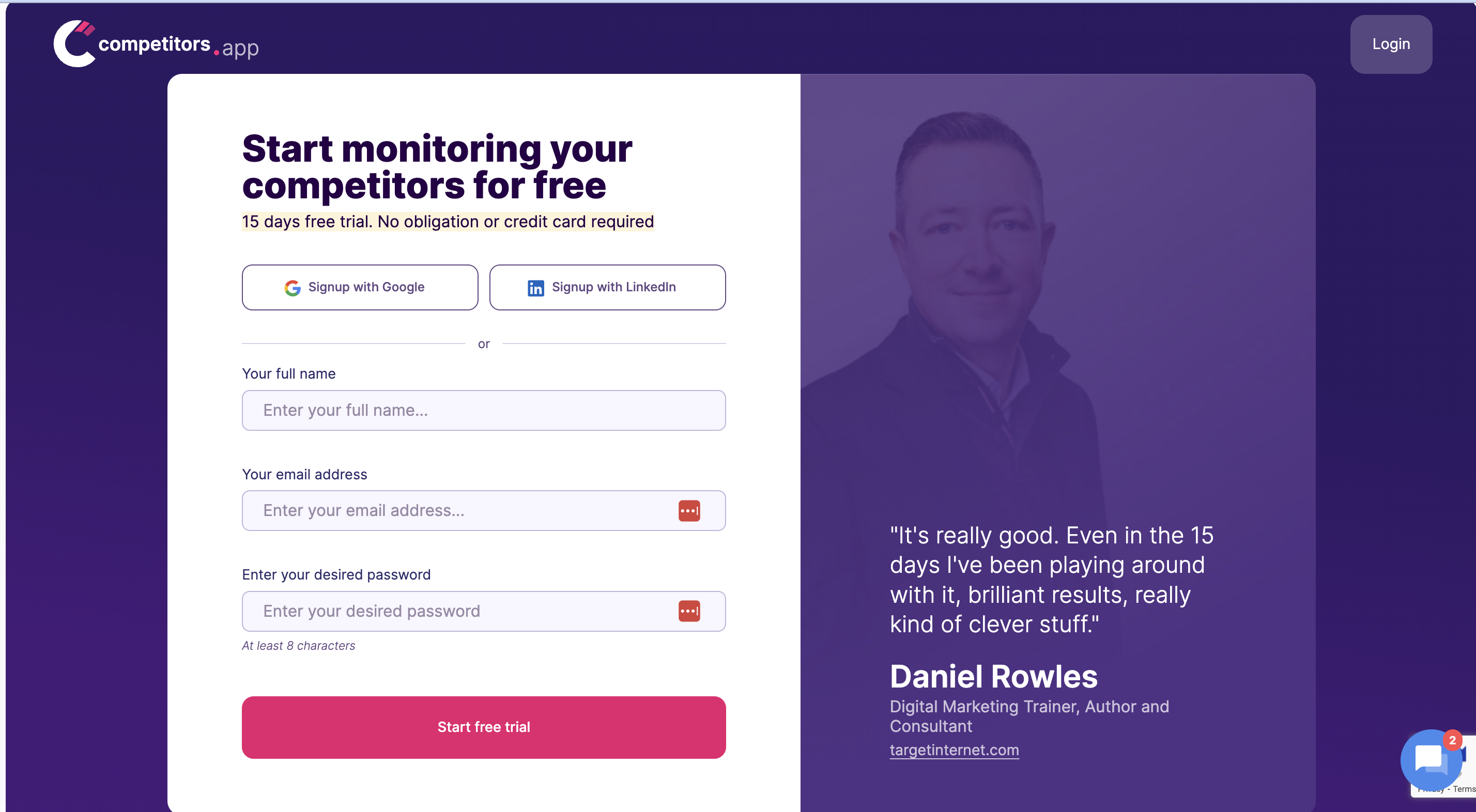
1. Sign Up and Set Up Your Account
First, create an account on Competitors.app. You'll need to provide some basic information about your business and your competitors. The setup process is straightforward and user-friendly.
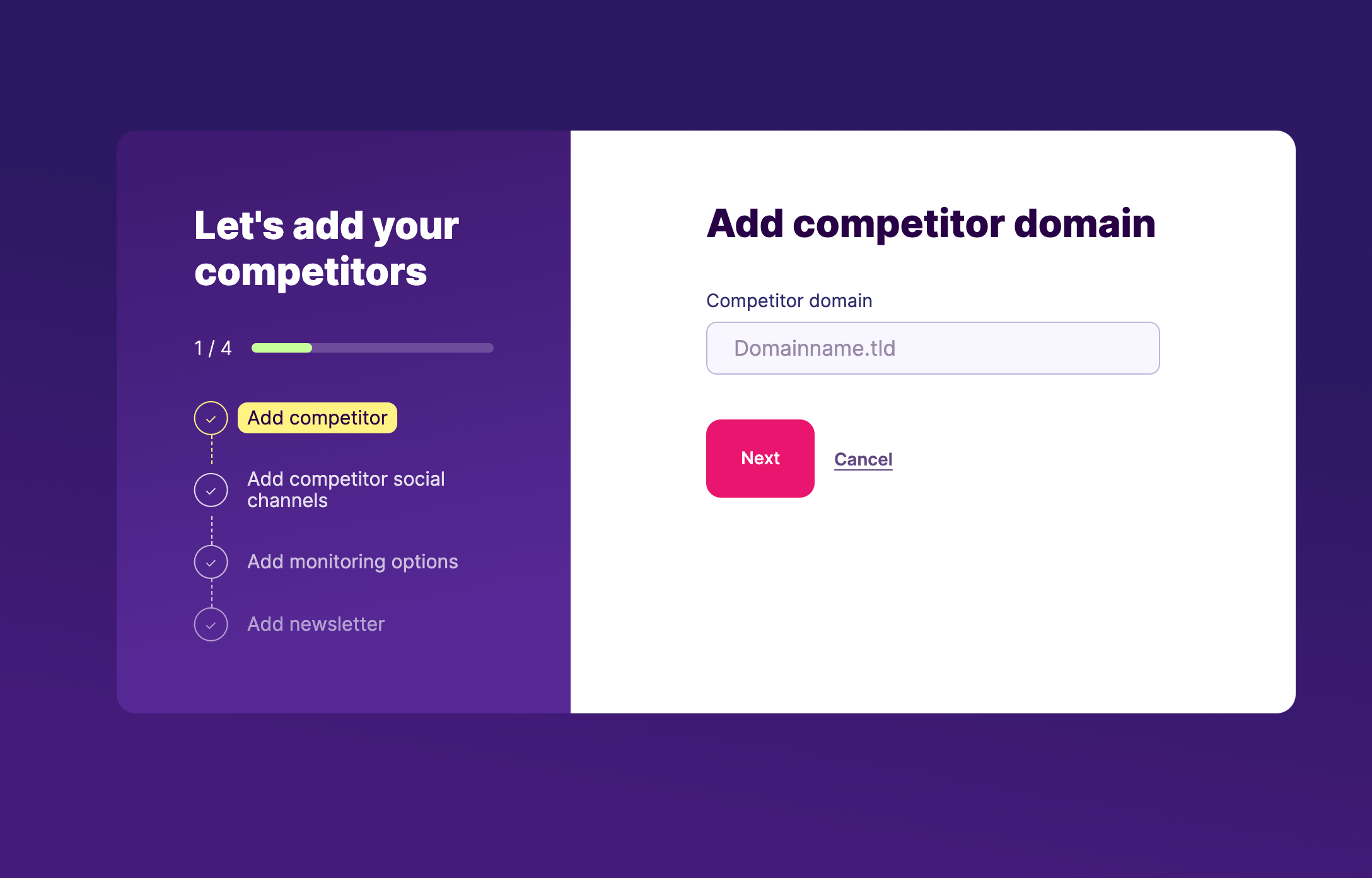
2. Add Your Competitors
Once your account is set up, add the competitors you want to analyze. You can usually do this by entering their website URLs. Competitors.app allows you to track multiple competitors, giving you a comprehensive view of your competitive landscape.
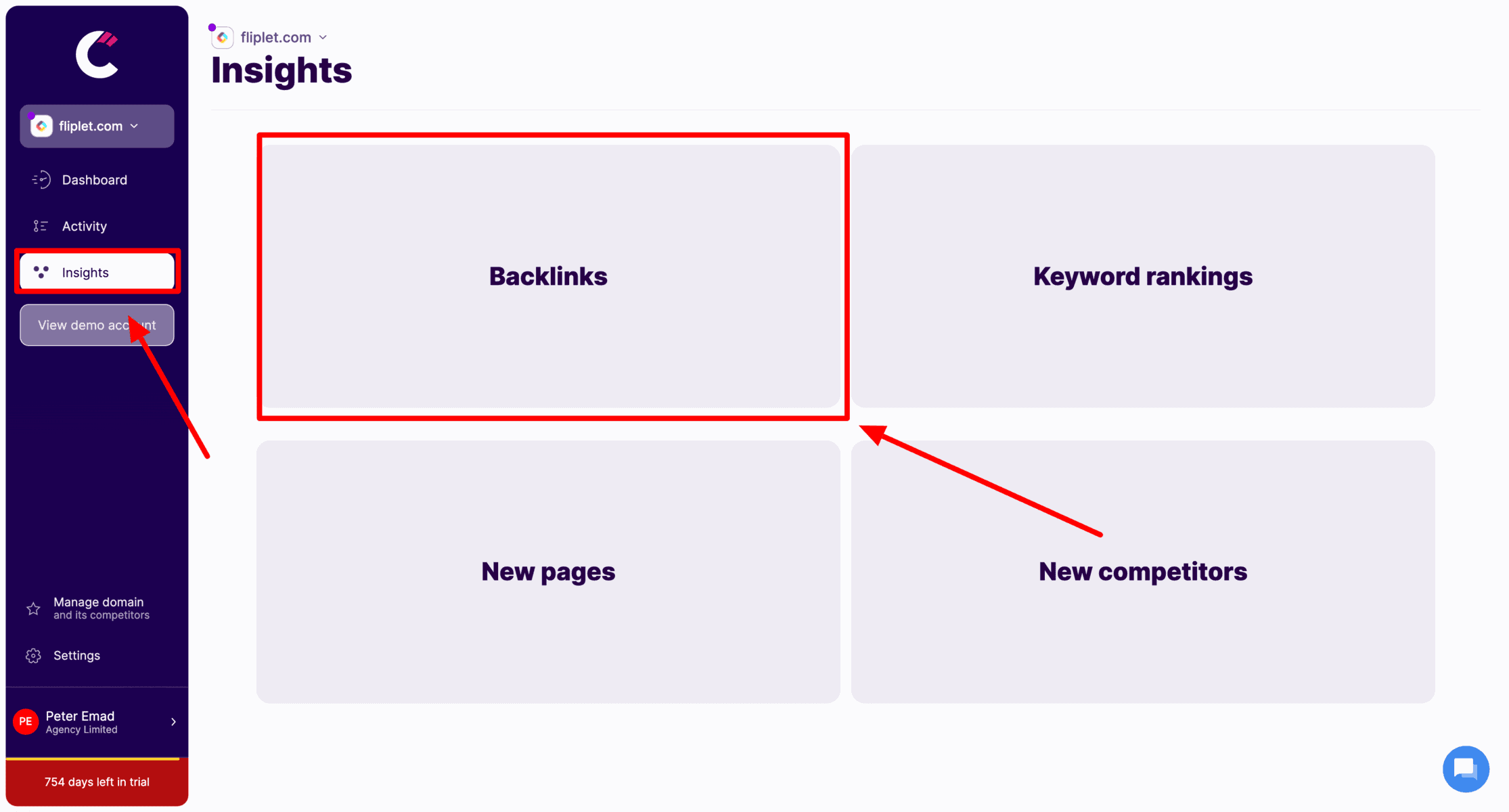
3. Navigate to the Backlinks Section
From the right side bar, click on "Insights" then select backlinks. This will take you to a page that contains a list of your competitors and then you can see their backlinks after you select any competitor.
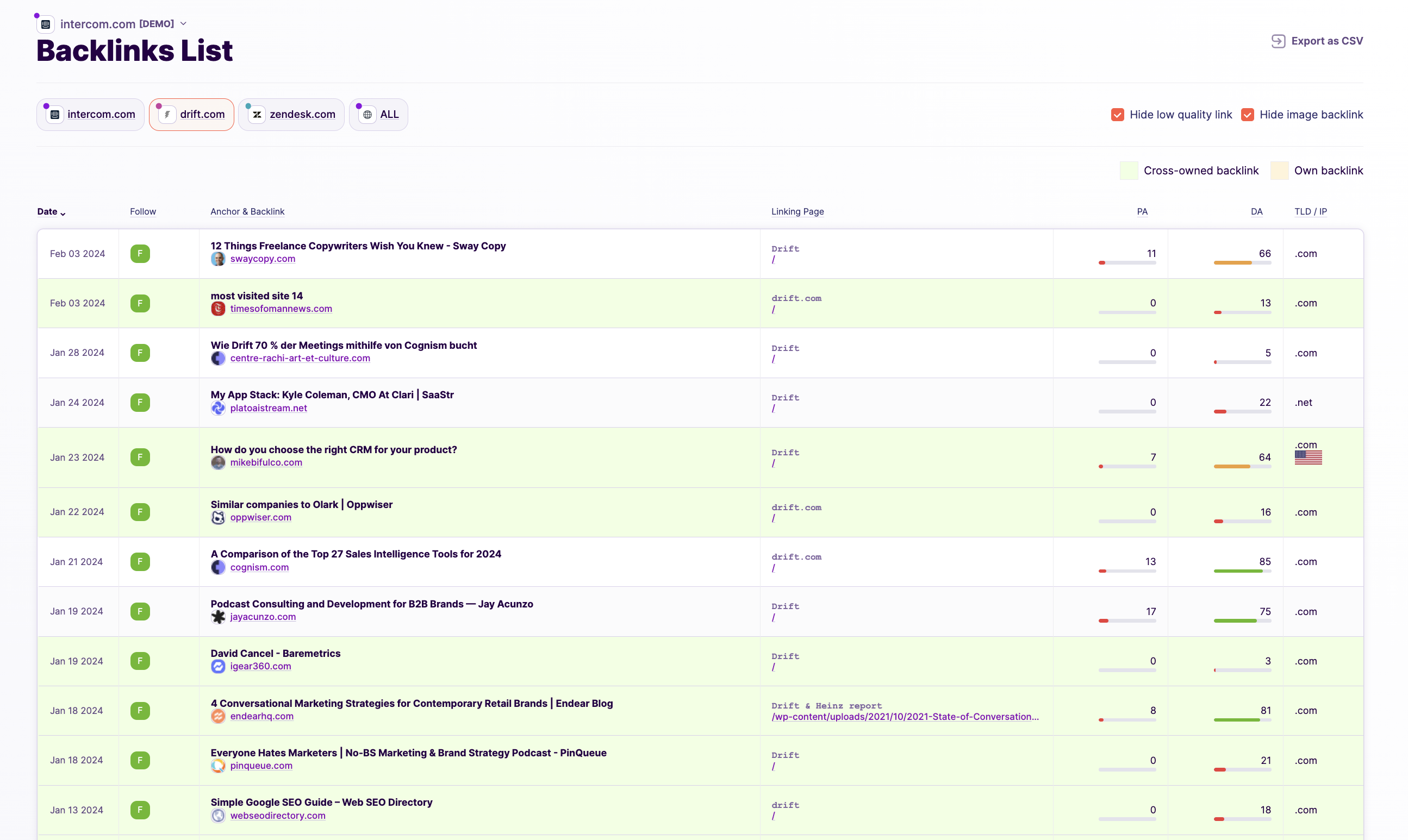
4. Analyze the Backlink Data
In the backlinks section, you'll find detailed information about each backlink, such as the source website, the anchor text used, and the date the backlink was added. This information is crucial for understanding the backlink strategies of your competitors.
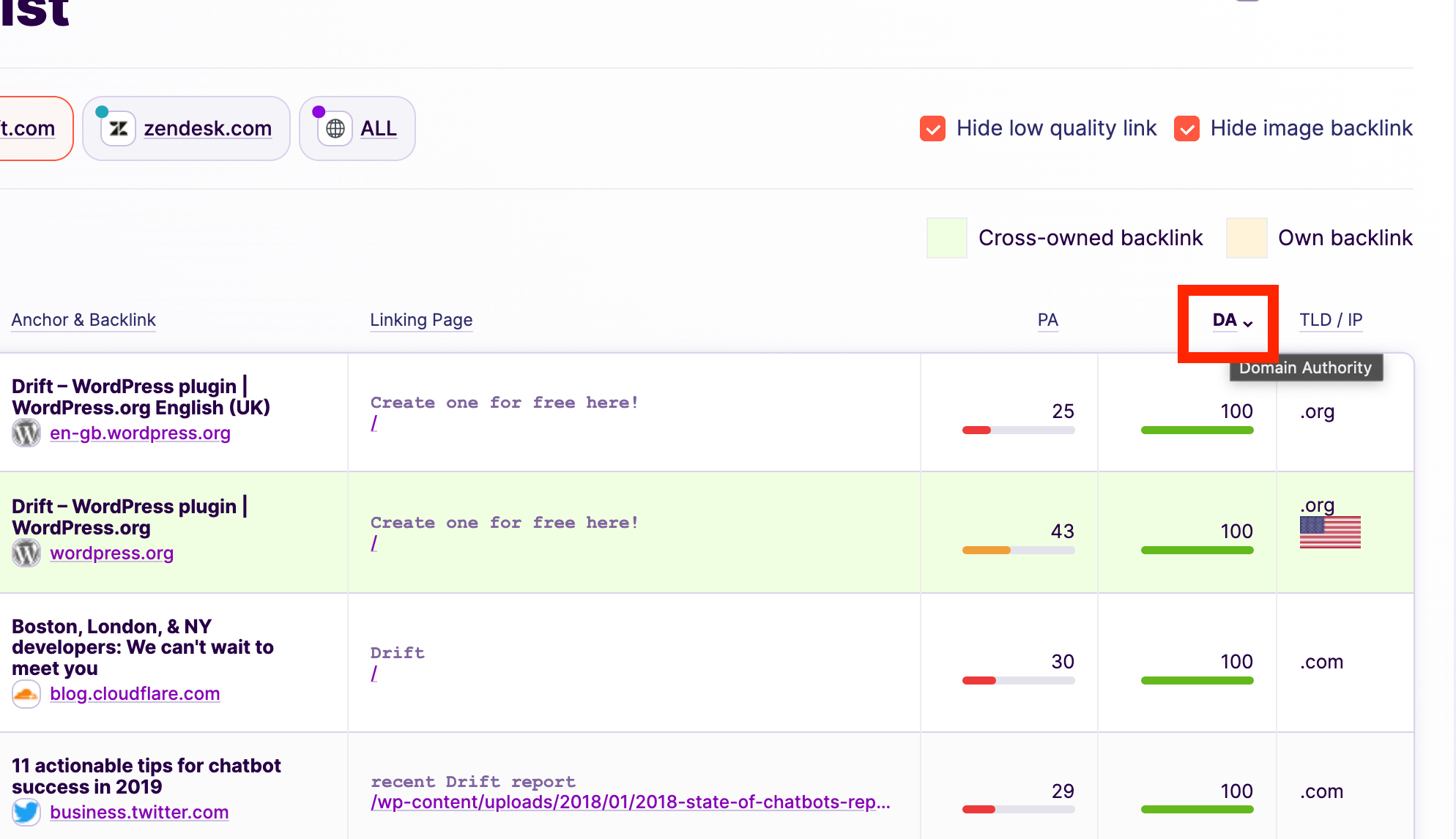
5. Identify High-Quality Backlink Opportunities
Use the data to identify high-quality backlink opportunities for your own website. Look for patterns in the types of content or websites that link to your competitors. These could be potential targets for your own outreach and link-building efforts.
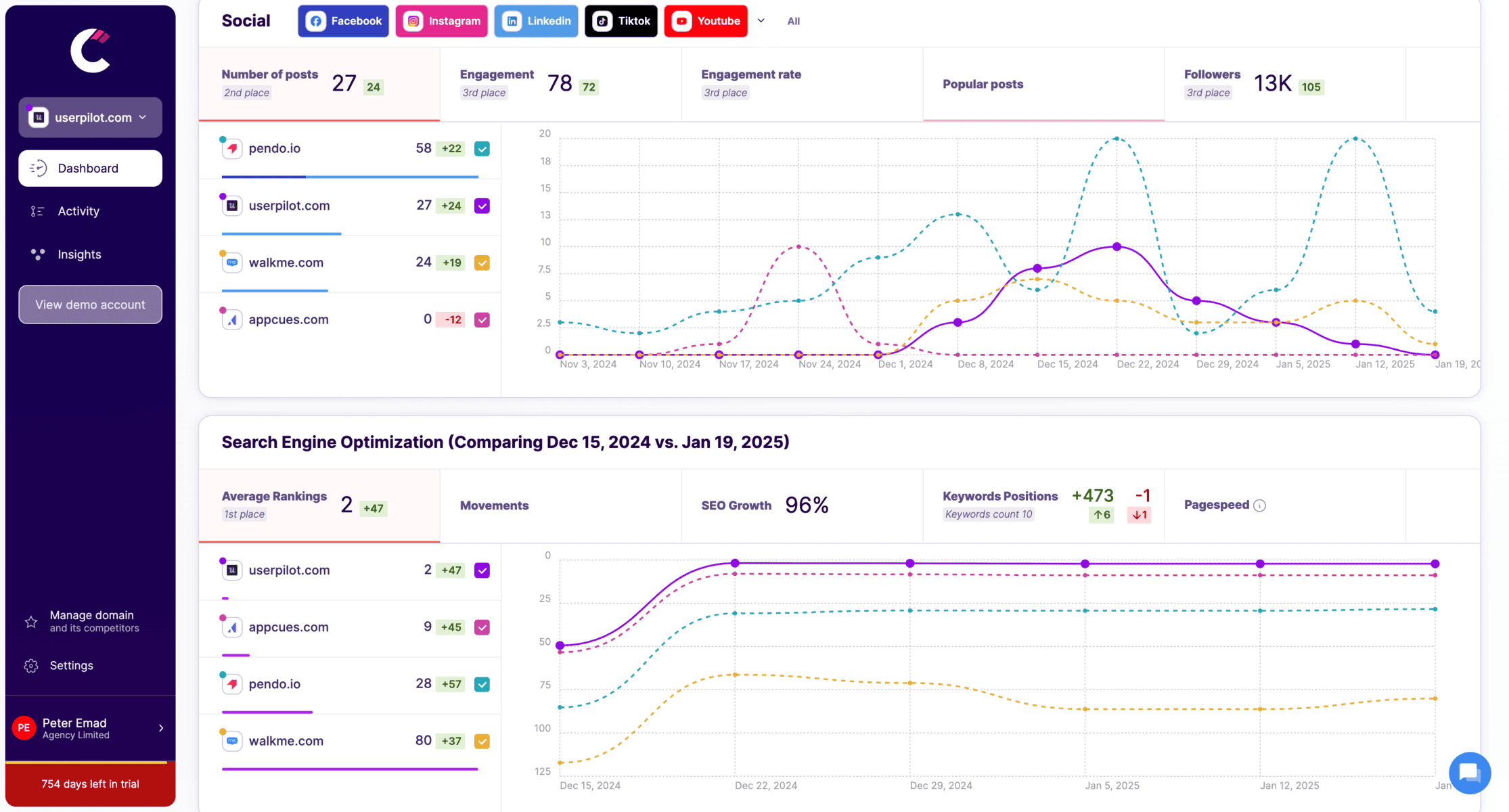
6. Monitor Backlink Trends
Competitors.app allows you to track changes in your competitors' backlink profiles over time. This can help you identify trends, such as increases in backlink acquisition during certain periods, which might correlate with specific marketing campaigns or content releases.
What is a Competitor Backlink Analysis?
When I first started working in SEO, I didn’t have much experience and thought backlinks were just about getting as many links as possible. But after analyzing competitors who consistently ranked higher, I realized it’s not just about quantity, it’s about quality.
Competitor backlink analysis is the process of breaking down where your competitors’ backlinks come from, how strong they are, and what they do to get them.
Instead of guessing where to build links, this gives you real data on what’s working.
The benefits of conducting a competitor backlink analysis
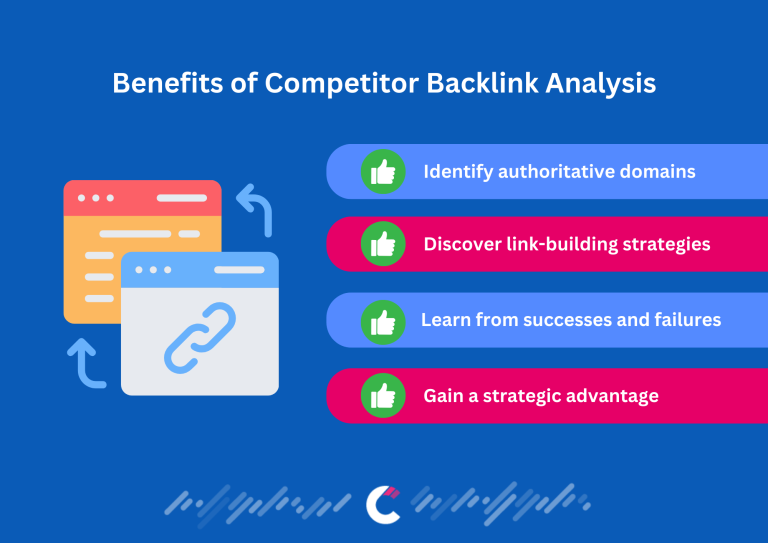
A lot of people make the mistake of blindly chasing backlinks without knowing if they’re actually worth it. (I was guilty of doing this too)
Competitor backlink analysis saves you time by showing you exactly where to focus.
Here’s why it matters:
✔ Find High-Authority Domains: See which domains are linking to your competitors and target them for your own backlinks.
✔ Discover Proven Link-Building Strategies: Uncover what’s actually working, whether it’s guest posts, PR, or niche directories.
✔ Learn From Competitor Wins (and Mistakes): See which backlinks helped competitors rank and which ones are low-quality and useless.
✔ Gain a Competitive Edge: Use this data to build better links, increase your site authority, and outrank competitors in search results.
How to Evaluate Competitor Backlinks
Not all backlinks are created equal. Some links can improve rankings, while others are completely worthless or can even do harm to your rankings.
Here’s how to break down a competitor’s backlinks the right way:
1. Check the Quality of Linking Domains
The first thing I look at is who’s linking to my competitors.
- Are these high-authority domains that could also link to me?
- Are they trusted sources in the industry or just random sites?
If a competitor is getting backlinks from strong, relevant sites, that’s where I should focus my efforts.
2. Look at Relevance and Geographical Location
A backlink from a high-authority but completely unrelated site? Not as valuable as you’d think.
- A niche-specific backlink carries more weight than a generic one.
- If you’re targeting local SEO, backlinks from websites in your country or region can boost rankings more than international ones.
Here’s a pro tip: Always ask yourself this question “Would this link actually send qualified traffic or leads to my site?” If not, it’s probably not worth chasing.
3. Analyze Link Attributes and Context
Not every backlink passes SEO value.
- Dofollow vs. Nofollow: Dofollow links boost SEO, while nofollow links don’t directly impact rankings (but can still drive traffic).
- Placement in the content: A link buried at the bottom of a random page? Not as valuable as a contextual link inside a well-written article.
The goal isn’t just to copy competitor backlinks, but to get better-quality links than they have.
How to Conduct a Competitor Backlink Analysis
Every competitor backlink analysis contains 5 steps.
Step 1: Collect Competitor Backlink Data
First, gather backlink data from your top competitors.
Use Competitors App to find their backlinks. You can also use other tools like Ahrefs or SEMrush,you need to focus on:
✔ Which domains are linking to them
✔ The anchor texts used
✔ The type of links (dofollow vs. nofollow)
✔ The actual pages getting backlinks
Why it matters: Not all backlinks are worth having. You want to find only the ones that actually move the needle.
Step 2: Categorize Backlinks
Organize the backlinks you got into categories.
- Type: Dofollow (SEO value) vs. Nofollow (good for traffic, but not rankings).
- Authority: High-authority links carry more weight than random or low-quality links.
- Relevance: A backlink from a niche-related site is more valuable than a generic one.
Why it matters: You don’t just want more links. You want better links than your competitors.
Step 3: Identify Competitor Strategies
Instead of just staring at a backlink list, look for patterns.
- Are they getting links from guest posts?
- Do they have partnerships or collaborations?
- Are they listed on resource pages or industry directories?
Use Competitors App to spot these trends faster. If one competitor is ranking very well for lots of keywords, they likely have a solid link-building strategy that you should use.
Step 4: Benchmark Against Competitors
Compare your backlink profile with your competitors.
- Where are they getting links that you aren’t?
- How strong is their domain authority compared to yours?
- Which types of backlinks are helping them rank?
This is known as a backlink gap analysis which helps you find high-quality domains linking to competitors but not to you.
Step 5: Take Action
Analysis done? Now go get these links!
✔ Reach out to sites that linked to your competitors.
✔ Use guest blogging, partnerships, or PR to land high quality backlinks.
✔ Build relationships with authoritative websites in your niche.
The goal isn’t just to match competitors, it’s to build an even better backlink profile.
Common Pitfalls in Competitive Backlink Analysis
Even if you’re tracking competitor backlinks, it’s easy to make mistakes that waste time and effort.
Here are two major pitfalls and how to avoid them:
Chasing High-Authority Links Without Checking Relevance
❌ Mistake: Only looking at a the website auothority or domain rating and overlooking whether it’s actually relevant to your niche.
✅ Fix: A relevant link from a niche-related site is more valuable than a random link from a high-authority but unrelated site. Focus on backlinks that match your industry and audience, these are the ones that actually help rankings.
For example, if you’re in the cooking niche, a link from a small blog about cooking is going to be better than a link from a large automobile magazine.
Ignoring the User Experience of the Linking Page
❌ Mistake: Getting backlinks from sites without checking if they actually drive engagement or add value to readers.
✅ Fix: Backlinks should send real traffic, not just sit on a page. Look for links on relevant pages with high user engagement. If the page is buried, has low traffic, or looks spammy, the link won’t help much.
As a general rule of thumb: always ask yourself this question: “if search engines didn’t exist, would I still want to get a backlink from this website?” if your answer is no, then you most likely shouldn’t get a link from this website anyway.
How to Implement Competitive Backlinking Strategies
Now that you’ve analyzed your competitors’ backlinks, it’s time to put that knowledge into action. Here’s how to turn insights into a real backlink strategy that moves the needle.
Step 1: Find Out What’s Working for Your Competitors
The first step isn’t just collecting backlink data—it’s understanding what’s actually working.
✔ Use Competitors App to analyze backlink patterns.
✔ See which types of content attract the most links.
✔ Identify the most frequent referring domains and anchor texts.
✔ Look for guest posts, sponsored content, or industry partnerships.
If certain types of content keep earning backlinks for your competitors, that’s your blueprint.
Step 2: Get the Same Backlinks as Your Competitors
Let’s be real—if your competitors got a backlink, you can too.
Here’s how to get the same backlinks (or better ones):
✔ Outreach to the same websites – If they linked to your competitor, they might link to you too.
✔ Find broken links – If a site links to outdated or broken content, offer your page as a replacement.
✔ Pitch your content as a better alternative – If your competitor got a link for an average blog post, create something more valuable and reach out.
The key is to add value so websites want to link to you. No spam, no shortcuts—just smart strategy.
Step 3: Learn from Their Backlink Wins (and Failures)
Your competitors’ backlink profiles tell you what content is actually earning links.
Look at their top-linked content:
✔ Are guides, reports, or case studies performing best?
✔ Are certain topics or formats attracting more backlinks?
✔ Do infographics or data-driven content get the most shares?
Don’t just copy—improve. If a competitor has a guide getting tons of backlinks, make a more detailed, better-designed version.
The goal? Make your content so good that websites prefer linking to you over them.
Step 4: Create a Unique Backlink Strategy That Sets You Apart
At the end of the day, the best backlinks come from original, high-value content.
Here’s how to build a stronger backlink strategy than your competitors:
✔ Find gaps in their strategy – Are they missing certain topics or not targeting specific industries?
✔ Leverage your strengths – Do you have access to unique data, expert insights, or a different angle?
✔ Use innovative formats – Maybe interactive tools, original research, or visual content will set you apart.
Winning at backlinks isn’t just about following competitors—it’s about beating them at their own game.
Frequently Asked Questions
1. What is the Best Tool to Find Competitor Backlinks?
The best tool for finding competitor backlinks often depends on your specific needs and budget. Competitors.app is the top choice for many SEO professionals due to their comprehensive databases and detailed analysis features. Each tool offers unique strengths, such as Ahrefs’ user-friendly interface and SEMrush’s integrated digital marketing tools.
2. What are the best competitor backlink analysis tools
The best competitor backlink analysis tools include Competitors App, Ahrefs, SEMrush, Moz, and Majestic. Competitors App stands out for its real-time monitoring and detailed backlink insights, helping you stay updated on competitors' strategies. Ahrefs and SEMrush are excellent for identifying backlink gaps and analyzing high-authority links, while Moz and Majestic provide quality metrics like domain authority and trust flow. These tools empower you to uncover opportunities, replicate successful strategies, and strengthen your SEO efforts effectively.
3. What is the Best Free Competitor Backlink Tool?
For those looking for free options, Competitors.app, Ubersuggest and Moz’s Link Explorer offer limited capabilities to analyze competitor backlinks without a subscription. Although these free tools may not provide as comprehensive data as their paid counterparts, they are useful for initial analyses and smaller-scale projects.
4. Can I Conduct a Backlink Analysis Without Specialized Tools?
While specialized tools greatly simplify the process and offer deep insights, it is technically possible to conduct a backlink analysis manually. This would involve using search engine operators to find mentions of your competitors and manually checking for backlinks. However, this method is time-consuming and may not provide a complete picture.
5. How Do Competitor Backlinks Impact My Website's SEO?
Competitor backlinks can offer insights into successful SEO strategies and reveal opportunities for your own backlink building. By understanding who links to your competitors, you can identify potential partners for your own link-building efforts. Additionally, analyzing the quality and relevance of these backlinks can help refine your SEO strategy.
6. How Often Should I Conduct a Competitor Backlink Analysis?
The frequency of competitor backlink analysis depends on the competitiveness of your industry and the pace at which your SEO landscape evolves. A quarterly review is a good practice for most businesses, but more dynamic sectors may benefit from monthly analyses.
7. What If My Competitors Have Significantly More Backlinks?
If your competitors have more backlinks, focus on the quality and relevance of your own backlinks rather than the quantity. Sometimes, having fewer high-quality backlinks can be more beneficial than having a large number of low-quality ones. Analyze the strategies behind your competitors’ backlinks and seek to implement more effective tactics.
8. Are All Backlinks Equally Valuable for SEO Purposes?
No, all backlinks are not created equal. Backlinks from high-authority, relevant sites are more valuable than those from low-quality, unrelated sites. The context in which a link appears and whether it is a dofollow or nofollow link also affects its value.
9. Is it Possible to Outrank Competitors with a Lower Quantity of Backlinks but Higher Quality?
Yes, it is entirely possible to outrank competitors with fewer but higher-quality backlinks. Search engines prioritize the relevance and authority of backlinks over sheer numbers. Focusing on acquiring backlinks from authoritative sites within your niche can lead to better SEO performance than simply amassing a large number of backlinks.
10. Why is it important to track competitor links?
Tracking competitor links is essential to identify high-quality backlink opportunities, uncover industry-specific link-building strategies, and stay competitive in search rankings. By analyzing where competitors earn their backlinks, you can refine your own approach, target authoritative domains, and strengthen your SEO efforts effectively.


